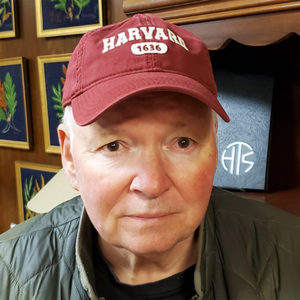
Terry Barkley
Terry Barkley is a retired professional librarian, archivist, and Harvard-trained museum curator, and a former history teacher. He is the author or co-author of seven historical books.
A former doctoral student in history at the University of Alabama, Terry completed the M.L.S. degree in archives and special collections there in 1987. He served as a graduate assistant and intern in the William Stanley Hoole Special Collections Library at Alabama. Terry was MMI Foundation Archivist at Marion Military Institute in Marion, Alabama, from 2007-2010. MMI was founded by James T. Murfee, the commandant of cadets of the Alabama Corps of Cadets during the Civil War.
Terry is an independent scholar who lives in Tuscaloosa, Alabama.
In the waning days of the Civil War, the Union leadership decided to inflict one final blow on the Confederacy to end hostilities. Accordingly, Major General James H. Wilson and his veteran Cavalry Corps were ordered to seize and destroy the Deep South agricultural and industrial capabilities in the largely untouched regions of central Alabama and western Georgia. The Confederate industrial centers at Selma, Alabama, and Columbus, Georgia, were prime targets of the raid.
In March 1865, Wilson rode into central Alabama with some 13, 500 cavalry, mounted infantry, and horse artillery. This was the largest contingent of cavalry ever assembled on the North American continent. Riding unopposed until he reached Elyton (now Birmingham), Wilson decided to create a diversion to keep part of Lieutenant General Nathan Bedford Forrest’s Confederate cavalry from pursuing him as he raced to beat Forrest to Selma. Brigadier General John T. Croxton was dispatched with 1,500 cavalrymen armed with Sharps carbines and Spencer repeating rifles to take Tuscaloosa, an hour to the southwest. There, they were to destroy the Confederate utility on site and burn the military school at the University of Alabama – the “nursery” of the Confederacy. The institution had assumed a military program in 1860, creating the Alabama Corps of Cadets (ACC). They had been furnishing trained officers and men for the Confederate forces throughout the war. The university also served as a munitions center.
Facing General Croxton’s troopers in Tuscaloosa were some home guard militia and 300 cadets of the Alabama Corps of Cadets, a military unit “composed wholly of boys.” Most of these young men had never been tested in battle, and they were armed with inferior weaponry against a formidable veteran foe banishing the most advanced weapons. After the cadets’ cannon were captured early on, the “Katydids,” as the cadets were called by some veteran Confederate soldiers, found themselves reduced to a suicide stance similar to that of the 300 Spartans at Thermopylae.
Culling the best material from the available archival, primary, and secondary sources, author Terry Barkley presents a sensitive but balanced portrayal of the Civil War service of the ACC in Twilight of the Confederacy: The Alabama Corps of Cadets and the Burning of the University of Alabama. These young men (many teenagers) faithfully served their university, the State of Alabama, and the Confederacy, even unto death.

